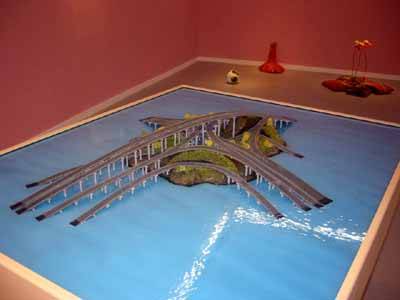MAKING OUT WITH JOHAN ZETTERQUIST CATALOGUE TEXT FOR EXHIBITION AT SUITE 606

Swedish artist Johan Zetterquist, based in Berlin. After experiencing an
installation signed “Zetterquist” one tends to agree. In the peculiarly
Zetterquistian universe, the rules of evolution result in some extraordinary
consequences. The whole environment is infected, or inspired, depending on one’s state of
mind, by some kind of virus, called “culture.” Culture is one of the side
effects of the illness named "life," which is just another word for
"nature.” The defect "culture," which man for so long has chosen
to categorize as the opposite of nature in order to systematize and comprehend its
results, is thus nothing but an arm of nature. As such, it also has the
inherent ability to develop, to merge, and mutate with other evolutionary
products in a natural way. It is exactly this organic process that the gadgets
in Zetterquist’s installations – which perhaps once distinguished the
excellence of civilization – are performing, but in a slightly twisted manner.
The twist, though, is not so far-fetched; actually, it is so close to the
reality we live in that, at first glance, one might not even react. It is on a
second glance, perhaps, that the slightly surreal element hits one somewhat
like a second-puff high. The ambivalence lingers on after that, partly because
of the exquisite and smooth visual expression by which the Zetterquist ruptures
the safe mode of existence we normally strive to retain.
The sculptures look really “natural,” but in a sense also very artificial. In Zetterquist's latest show however, there has been an interesting change of scenery. In the struggle between nature and culture, where nature blended in with the culture in his earlier
sculptures— for instance, in Basket Flower , where organic slimy branches grew out of a
basketball— now the opposite has happened, and culture is organically merged
into nature. In the model of the public artwork, Highway Island, a tiny tropical island is
almost entirely paved over by the intersection of two superhighways that rise
directly from the sea. One can easily imagine the conservative objections with
puritan undertones that would be heard if another suggestion for a public art
piece, Make-Out Tower – Tower solution for flat cities was built. The idea of a tower
accessible by car with a parking lot on top could, my oh my, encourage loose
living or even infidelity. Nevertheless, who hasn’t made out in a car?
Zetterquist’s propositions for public art pieces are both conceptual and very playful indeed. One fragile drawing depicts three wind-powered turbines whose only function is
to drive a fourth against the wind. Ordinarily the multi-faceted installations are surrounded by a color frame: the walls are not covered with really ”clean” or candy colors, but are a bit “dirty” or mixed. The wall paintings are not only part of the installations as a whole, but also pieces in themselves, alike monochromes, and sometimes titled almost after colors: Awesome Blossom, Mocca Crazyness or Hot Lips.
